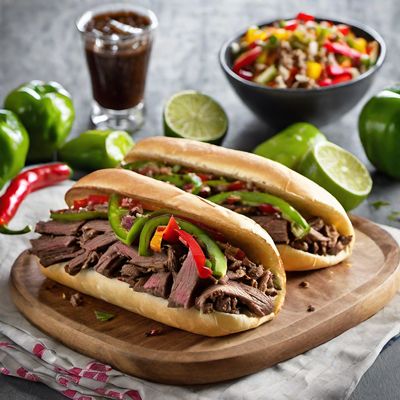
Ingredient
Cheese, blue castello
Velvety Blue Indulgence
Blue Castello cheese is a soft and creamy blue cheese with a distinct tangy flavor. It is characterized by its velvety texture and marbled blue veins, which develop during the aging process. The cheese has a rich and buttery taste, with a subtle hint of saltiness. It pairs well with fruits, crackers, and bread, and can be used in both sweet and savory recipes.
Origins and history
Blue Castello cheese originated in Denmark and is named after the Castello cheese company that first produced it. It was created in the 1960s as a milder alternative to traditional blue cheeses. The cheese is made from cow's milk and undergoes a specific aging process to develop its unique flavor and texture. Today, it is enjoyed worldwide for its creamy and tangy characteristics.
Nutritional information
Blue Castello cheese is a good source of calcium and protein. It also contains moderate amounts of fat and sodium. As with all cheeses, it should be consumed in moderation due to its calorie content.
Allergens
May contain milk and lactose.
How to select
When selecting Blue Castello cheese, look for a cheese that is creamy and free from any signs of mold or discoloration. The cheese should have a smooth and velvety texture, with evenly distributed blue veins. Opt for brands that use high-quality milk and have a reputation for producing flavorful blue cheeses.
Storage recommendations
To maintain the freshness and quality of Blue Castello cheese, store it in the refrigerator in its original packaging or wrap it tightly in plastic wrap. Keep it away from strong-smelling foods to prevent flavor absorption. It is best consumed within a week of opening.
How to produce
Blue Castello cheese is typically produced by specialized cheese producers using traditional cheese-making techniques. It requires specific aging conditions to develop its unique flavor and texture.
Preparation tips
Blue Castello cheese can be enjoyed on its own, paired with fruits or crackers, or used in various recipes. It melts beautifully, making it a great addition to grilled sandwiches, pasta dishes, or salads. It can also be crumbled and used as a topping for pizzas or baked goods.
Substitutions
Gorgonzola, Roquefort, or Stilton cheese can be used as substitutes for Blue Castello cheese, as they share similar creamy and tangy characteristics.
Culinary uses
Blue Castello cheese is commonly used in salads, sandwiches, pasta dishes, and as a cheeseboard selection. It is particularly popular in Scandinavian and European cuisines.
Availability
Blue Castello cheese is commonly available in specialty cheese shops and gourmet grocery stores. It is also available online for international shipping.




